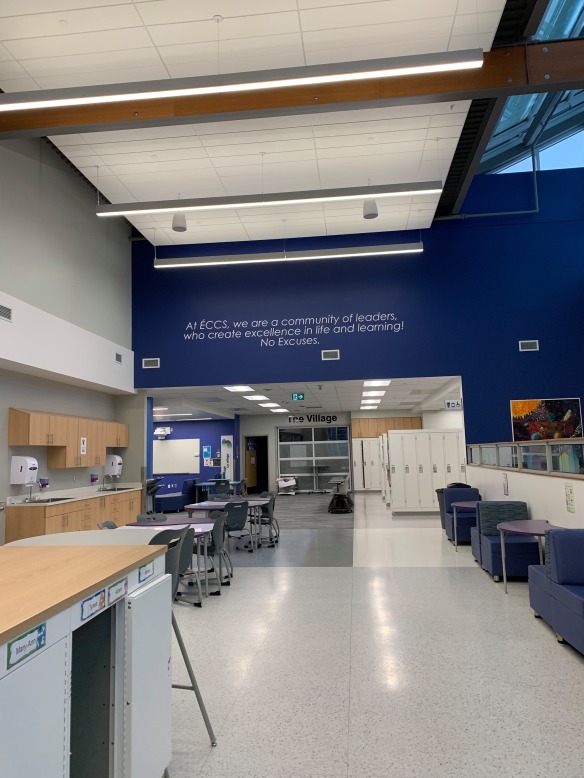My cooperative teacher had his grade 7 and 8 classroom set up in rows of desks. This is a very traditional approach to classroom set-up but our cooperative teacher explained that they found this worked best for their class since they were a more chatty group of students. Admittedly, I think this reduced some chatter but was not a huge factor in behavioural management as it seemed for some students, it was regular classroom culture to leave their desks to have a discussion with another student. This was especially an issue during the math period which immediately followed recess. My placement partner and I agreed that this was the toughest time to keep the students engaged and challenged our behavioural management skills. However, I do not think this was a bad thing as it gave us opportunities to try out new things and receive immediate feedback.
In particular, one thing I tried out in math was exit slips. As suggested by our cooperative teacher, each math lesson ended with a textbook assignment. One group of male students always finished early and for as long as we were there, the classroom teacher allowed them to leave the room to go play poker. After 2 or 3 times witnessing this, I noticed the students were often distracting others as they left the room. Moreover, it encouraged other students who had finished early to be disruptive as well. So, I decided to try something new during my second math lesson with the group and asked that once they completed the textbook questions, to come see me for an index card where they will make up their own word problem involving rates and then exchange with a friend and solve each others’ problems. I was nervous to do this as I could not predict whether or not they would listen to me. However, the group of students received the change very well and my cooperative teacher and I were impressed by their attitude towards this activity. The classroom teacher even mentioned that they might incorporate the exit slips regularly.
Another thing that went well for me was a health lesson that I taught in the first period. The students are normally less chatty and more well behaved during the first class of the day. With this in mind, I decided to try out a group activity: a carousel activity. It went over very well with the students. We had great conversations and the students had several insightful responses to questions asked.
Overall, I believe I still have work to do with my classroom management abilities. Another thing I could improve on is anticipating student confusion in my lessons (ie. assuming which textbook questions may create confusion for students). I would also like to have focused future lessons on varying my instructional strategies, especially in math. Overall, in the short time I was there, I was able to make individual connections with students and I am disappointed that I will not be returning to say goodbye.



